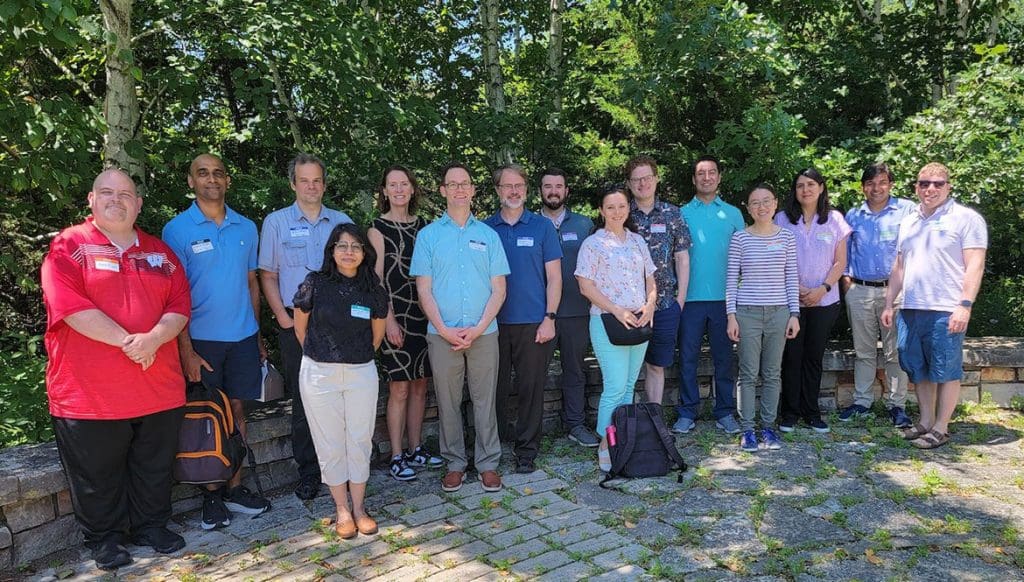07 Nov Fluorescence Imaging Explained: Microscopic Life in Many Colors

Together UW–Madison and the Morgridge Institute for Research have built a hub for imaging science in Wisconsin, multiplying their impact. This picture, from a Summer 2025 Biomedical Optics Retreat, includes (left to right): Kevin Eliceiri, Mohit Gupta, Andreas Velten, Aarushi Bhargava, Melissa Skala, Scott Sanders, Jeremy Rogers, Joshua Brockman, Filiz Yesilkoy, Randy Bartels, Juan Caicedo, Jennifer Choy, Marien Ochoa, Abhishek Kumar, and Aaron Hoskins.
Life is aglow — literally. Scientists harness this phenomenon, known as fluorescence, to reveal the cellular secrets underlying health and disease otherwise destined to remain hidden from view.
Imagine a future in human health where cardiac muscles damaged by heart disease or spines devastated by cord injuries don’t just scar over but could be regrown to resume normal, healthy function. To realize this dream, scientists work to visualize the incredible power of other organisms — such as zebrafish and flatworms — to regrow their tissues and organs following injury.
Their tool of choice? Fluorescence microscopy.
Fluorescence works like a visual microphone, amplifying otherwise inaccessible cellular and subcellular details and interactions. Given the forceful link between seeing and knowing, it’s perhaps impossible to imagine modern science without fluorescence microscopy. Today, engineers are pushing a wide array of fluorescence imaging approaches to visualize biology with ever higher precision, at greater depths, and in more dynamic live imaging contexts.
The future of fluorescence microscopy at Wisconsin
The University of Wisconsin–Madison and the Morgridge Institute for Research have built a nexus of researchers who are pushing biological optical microscopy — including and beyond fluorescence — at all of its edges. Working together and with collaborators across the globe, these labs are engineering transformative label-free techniques, cutting-edge hardware, artificial intelligence that may one day offer the path to a “virtual cell,” and more.


